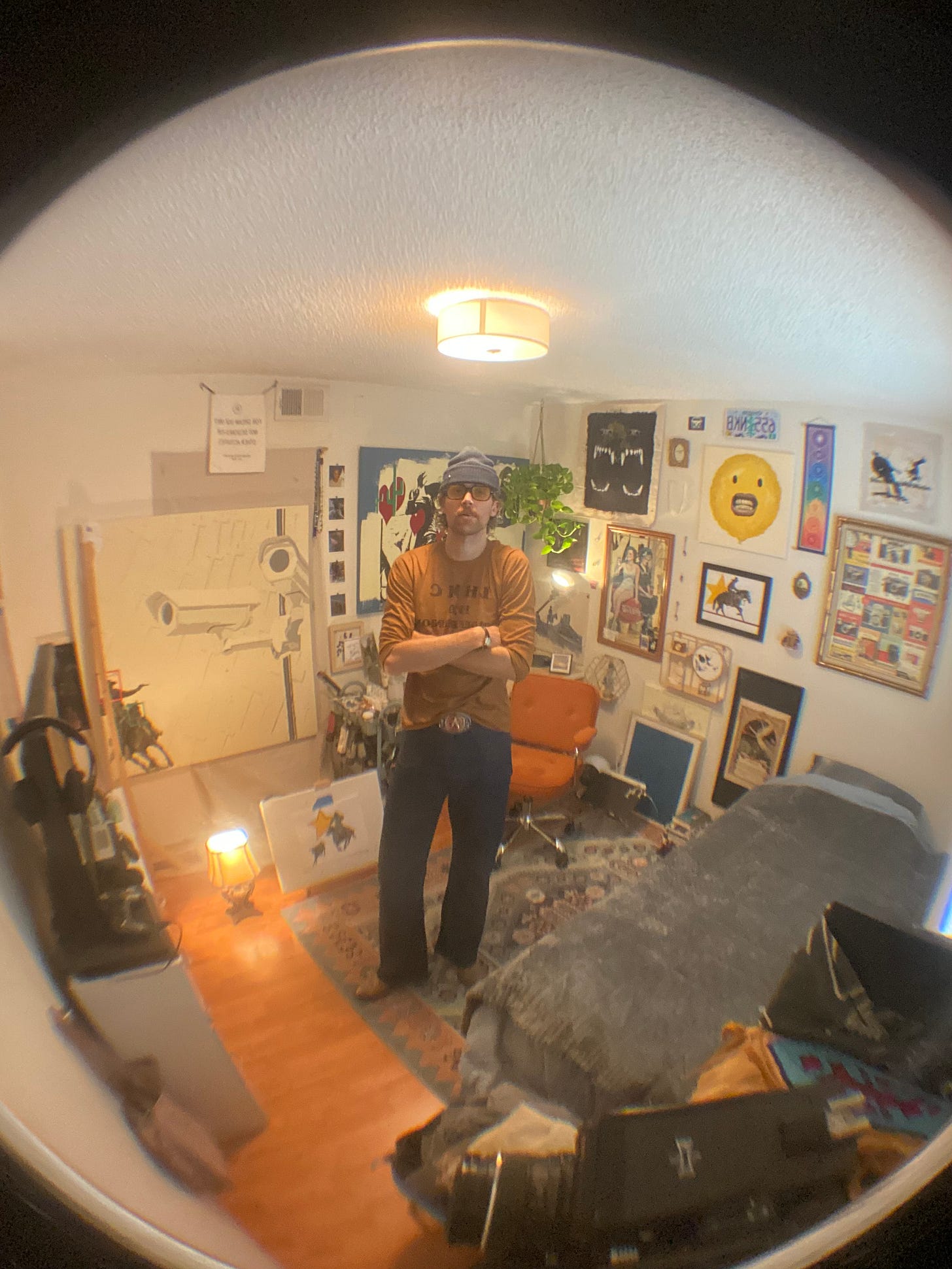Environment is a Perspective
Whenever I fly on an airplane, I feel the vastitudes of life in a peculiar way for days after I arrive home. The urgency to stagnation, uniformity, and mundaneness pressure us into these channels of subordination that we cannot control. I often think of Tetsuya Ishida’s paintings that depict life in a haunting yet truthful representation of the standardization of life.
Ishida was a Japanese painter who lived much of his life in what the Japanese call “Hikikomori,” which is severely prolonged isolation in very small spaces. He died when he was 31 after being hit by a train in a Tokyo suburb. I learned of his work after viewing it at Wrightwood 695 in 2019. I think about his paintings sitting in traffic, on planes and trains, standing in line, and so many other places where life feels like an assembly line… his work had a lasting effect on me.
I have been thinking about how our environment affects us and the work that we do in those spaces. We can let our environment dictate what we do or change the way we exist in that landscape to make the most optimal work that we can. We could also completely bow out and let our environment take over and annihilate ourselves. There are many different paths that can be taken and I don’t believe there is any specific right way to achieve quality. Ishida is a perfect example of how he didn’t let his unfortunate circumstances deter him from creating a body of work that would stand the test of time.
In Assembly last night, my friend Cooper shared that he does a lot of his artwork inside his 10 ft x 10 ft bedroom. He has a space dedicated to where he goes on his computer, a space for his painting, and a space for sleeping. He never utilizes his sleeping area as a painting area, or his desk area as a sleeping space… every spot has its devoted use and it remains that way.
“Is that restricting?” someone asks.
A small grin and an indifferent shrug loosened out of his shoulders to which he said, “Not really.”
Cooper Jenusevskis in his bedroom studio
Cooper has been to 5 of the 6 Assembly meetings and his answers repeatedly remind me that everyone has a wildly different approach to their artmaking practices. The times that Cooper does talk he usually speaks against the grain of common artistic ideologies with thoughtful intersection.
“I think we all hear the same thing of something similar to “when you’re uninspired make something and keep doing it until you are inspired” and I’ve never really resonated with that. It works for a lot of people (and I do it myself sometimes too of course) but in general, I think taking breaks as an artist is healthy. At least for a hobby artist like myself, I have that pleasure. Doing something different, outside your current medium, or consuming different art is nice to break it up too. If at the end of the day I’m not enjoying what I’m doing or making, I’ll switch it up. Life’s too short. Some of my off days from work where I don’t have ideas I will literally just listen to music, enjoy the sun and my surroundings and just be present.”
His bedroom is a well-oiled machine, but he keeps his perspective in shape like a well-watered plant. The environment is not restrictive in the slightest because of the uniformity and the mindset. He has designations and there grows competence for success.
“…maybe that’s why I struggled with the term of being an artist. I just feel like I’m just a guy who makes things sometimes.”
There is something to be said about those who don’t see what they do as the thing that it is.
His approach to artmaking thrives on a deeper conceptual level than he’d like to take credit for, allowing the space needed to ultimately create the body of work that feels natural to him.
Our perspective is everything. It’s okay to be dead-set on a perspective, too. A great contradiction of life, art, and culture.
Don’t get it twisted, Tetsuya Ishida and Cooper are very different from each other, but what I’ve learned is that environment is less literal than I make it out to be. At the very core of everything is the perspective. People who harness headspace first can learn to succeed in any physical environment with some practice and determination.
At the same rate, there is just as much growth to be discovered in changing the way that we think before moving to changing tactile aspects of our surroundings as there is to altering our physical environment as the catalyst for new opportunities. Ultimately, whatever you decide to do to optimize your ability to make better work is a step in the right direction and an example of taking advantage of your environment in more ways than one. It’s always healthy for me to remind myself that there is no right way to be an artist. People are here to create, dream, and imagine, and we will always find a way to do that no matter our environment—or at least we’ll try our very best to.
As always, thank you for being here,
Eli, MAXIMA
If you’d like to look at more of Cooper’s work, you can view it here



